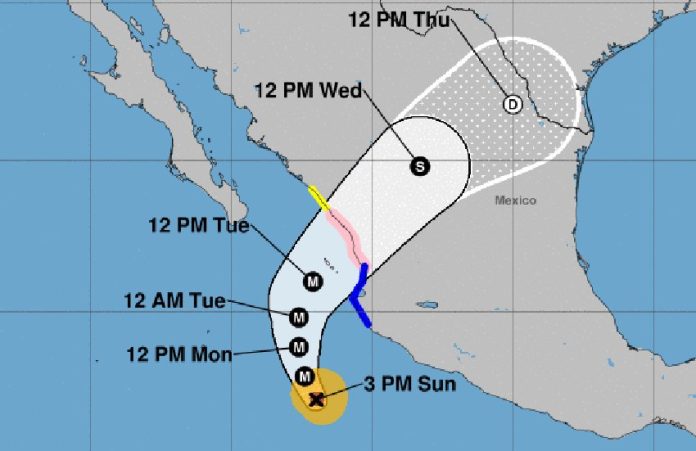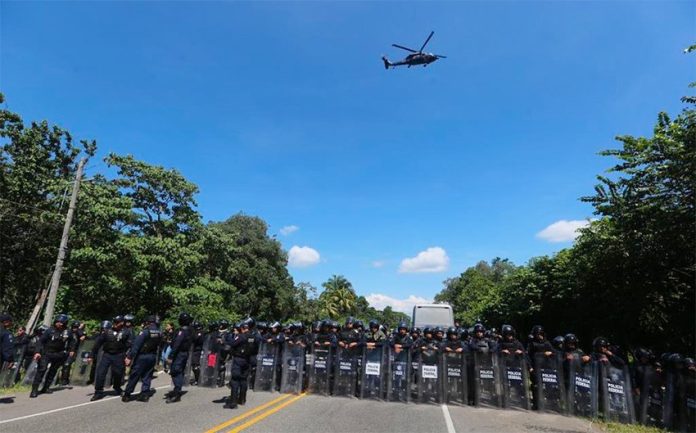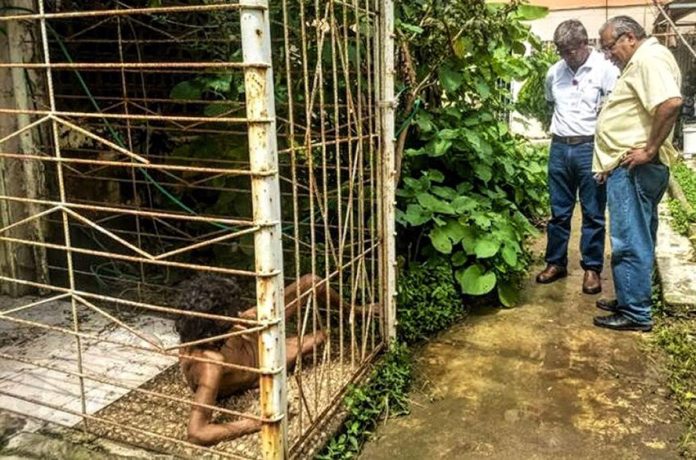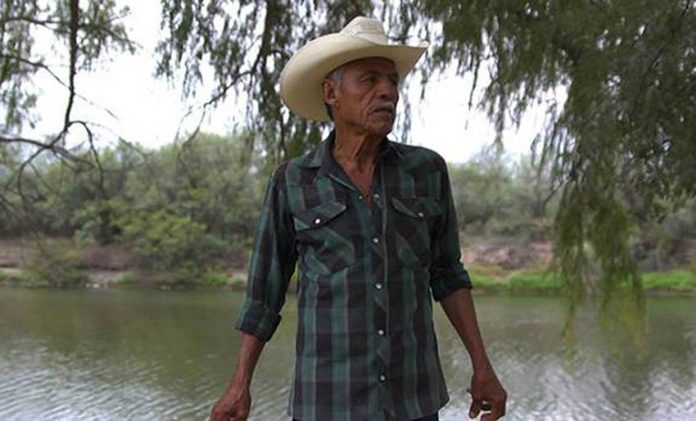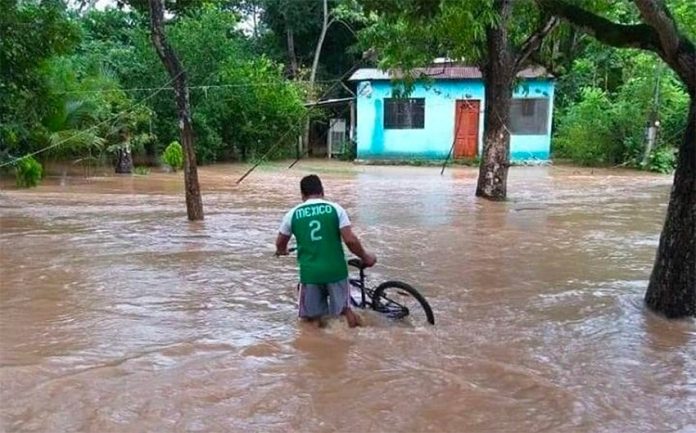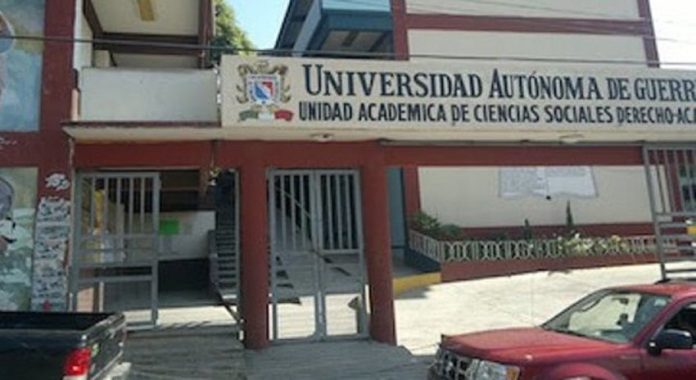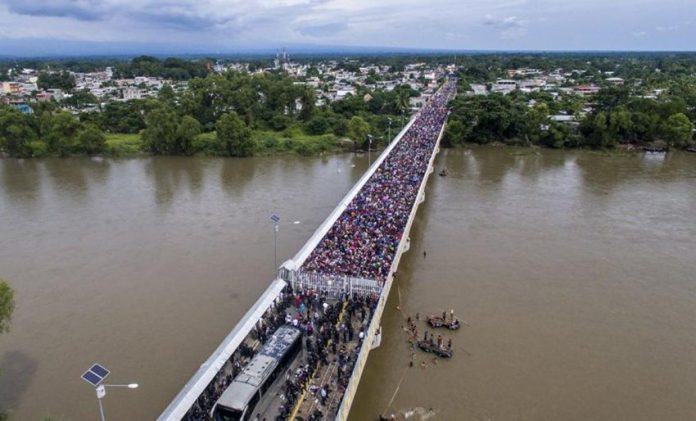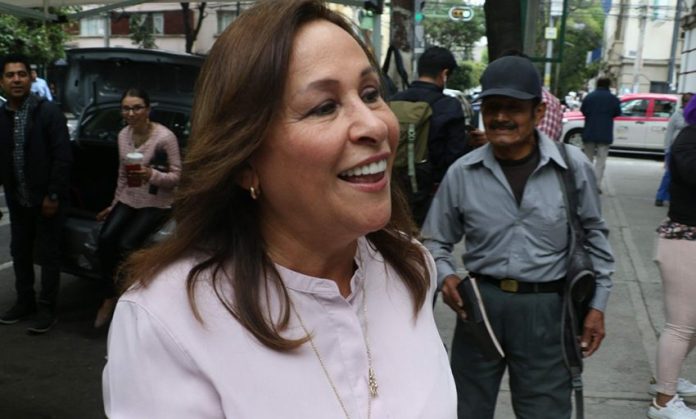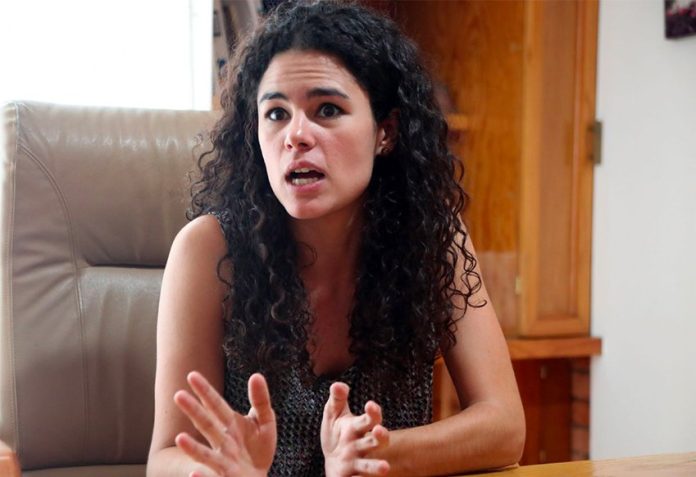Thousands of Central American migrants camped out last night on the Guatemalan side of Mexico’s southern border as a standoff continues following a clash with Federal Police yesterday.
Many slept on the bridge that crosses the Suchiate River, connecting Guatemala to the state of Chiapas.
Young children and babies are among the huge caravan of mainly Honduran migrants who were exhausted and hungry after a long journey through Guatemala. Many on the crowded and rubbish-strewn bridge pleaded with police to allow them to enter.
“Please, it is night. Let us pass,” Alba Luz Girón, a Honduran mother of three fleeing violence in Honduras begged officers.
“We want them to give us permission to go to Mexico,” her five-year-old son Ramón said. “We wouldn’t stay.”
But early today most members of the migrant caravan, which according to some estimates is made up of as many as 4,000 people, were still stuck in Guatemala.
The huge caravan burst through a Guatemalan border fence yesterday and moved onto the bridge before being met by a wall of Mexican police with riot shields.
As they tried to advance, the migrants shouted, “we’re not criminals, we’re international workers!”
Around 50 migrants managed to break through the police defenses before officers deployed pepper spray, forcing the rest to retreat.
The police response has been described as one of the most aggressive actions ever taken by Mexico on its southern border.
“Every time there’s a [migrant] caravan there are police sent to the southern border . . . but we’ve never seen anything as dramatic as we’re seeing today,” said Eunice Rendon, coordinator of migrant advocacy group Agenda Migrante.
“This has everything to do with [U.S. President] Trump,” she added.
At least 20 people were injured in the confrontation, including several migrants, four police officers and members of the media.
With large metal barriers blocking their path, some migrants jumped off the border bridge into the Suchiate River to try to cross on rubber tire rafts. Others threw rocks at the police.
Using a megaphone, Federal Police commissioner Manelich Castilla urged the migrants to be calm and promised they would be able to enter Mexico but must do so in an orderly manner.
Police and immigration officials later began letting small groups of migrants enter through a gate if they wished to apply for refugee status from the National Immigration Institute (INM).
Once those allowed in had filed claims, they were taken to shelters in Tapachula where they must wait for their applications to be reviewed, a process that can take up to 10 days.
Only a very small number of the migrants are believed to have visas to enter Mexico. Honduran and Guatemalan authorities said late yesterday they were mobilizing to return migrants to their country of origin.
Some, such as 45-year-old Honduran construction worker José Ramón Rodríguez who is traveling with family members, have decided to give up their pursuit to reach the United States.
“Tomorrow we go home,” he said, his companions nodding in agreement.
Others, however, are determined to continue their journey despite the uncertainty.
“. . . I’ll fight, I’ll try [to cross] again,” said Hilda Rosa who is traveling with her four teenage children.
Asked by the news agency Reuters why she had left Honduras, the Tegucigalpa native replied: “You know why: no work, violence.”
United States Secretary of State Mike Pompeo traveled to Mexico City yesterday, where he met with top government officials including President Peña Nieto and Foreign Secretary Luis Videgaray after the clash had occurred.
“We are quickly reaching a point which appears to be a moment of crisis,” Pompeo said in an appearance with Videgaray, referring to the flow of Central American migrants.
He accused the caravan of using women and children as shields in their attempt to enter Mexico.
Pompeo told Mexican officials, “the way that you handle this is your sovereign decision” but he and President Trump have made it clear that they expect Mexico to stop the caravan.
Trump posted a video to his Twitter account Thursday of Federal Police arriving at the airport in Tapachula, writing “Thank you Mexico, we look forward to working with you!”
He also threatened to deploy the military and close the United States’ southern border.
Videgaray said yesterday that the government would enforce Mexico’s immigration laws “in a humanitarian form, thinking first of the interest of the migrant.”
Earlier this week, the government warned migrants traveling to the United States via Mexico that if they enter the country illegally they will be detained and deported.
Earlier this year, Mexican authorities gave transit documents to migrants traveling as part of another caravan and immigration advocates are saying that doing so again would be the reasonable and humane response.
The United Nations Refugee Agency (UNHCR) has agreed to a request to help attend to the migrants but it is unclear exactly what role it will play.
In an address to the nation last night, President Peña Nieto said that a large group of migrants had “tried to enter Mexican territory irregularly, attacking and even hurting some elements of the Federal Police.”
“Mexico does not permit and will not permit entry into its territory in an irregular fashion, much less in a violent fashion,” he said.
The migrant caravan originated in the notoriously violent Honduran city of San Pedro Sula last week.
Its numbers increased as it advanced as more Hondurans as well as Salvadorans and Guatemalans joined the group.
Source: Milenio (sp), CBS News (en), Reuters (en), The Washington Post (en)
